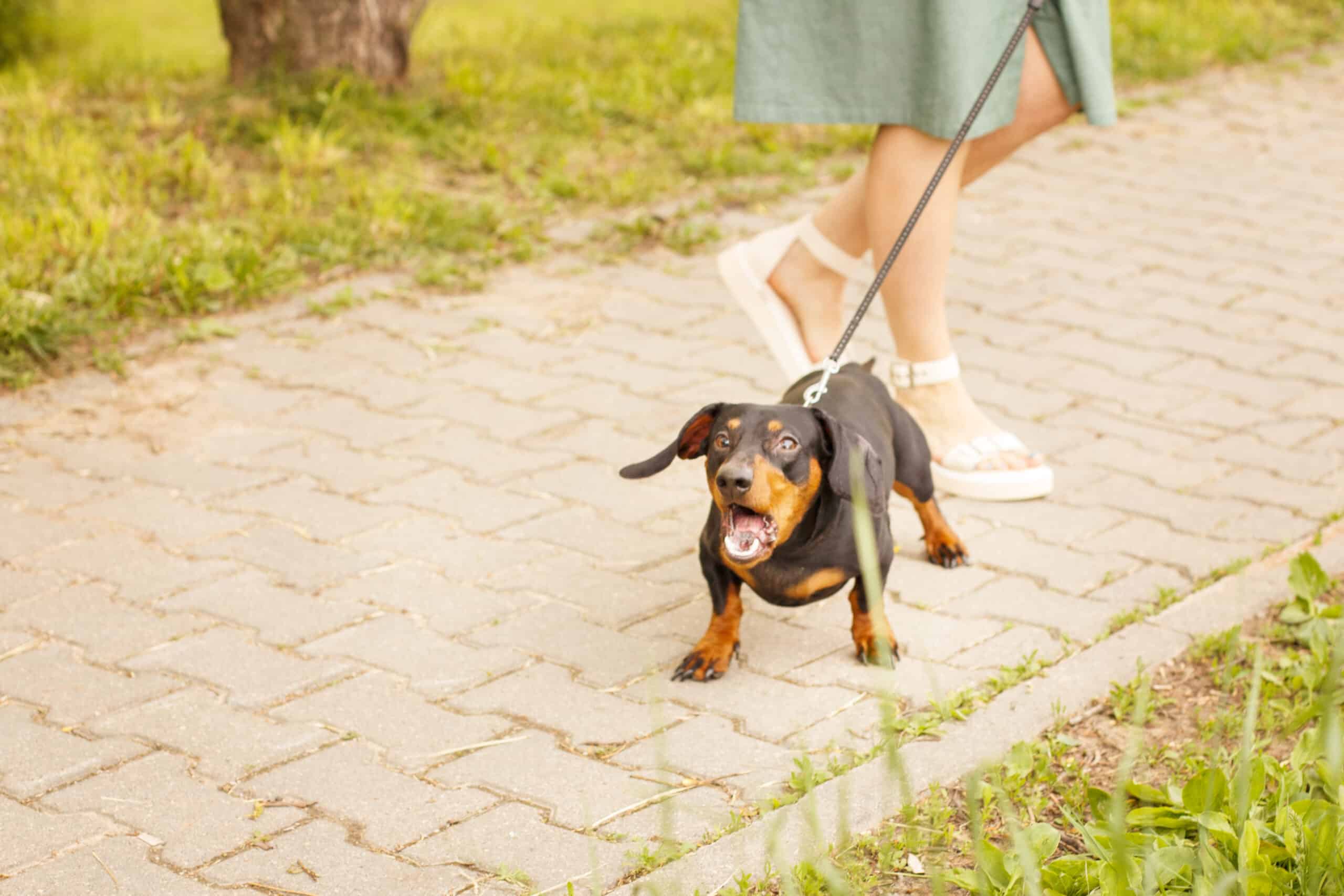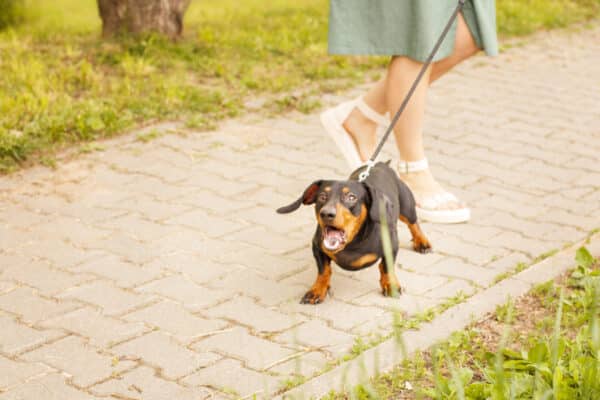Today, we will review some of the most common triggers for dog aggression. If your dog is aggressive or reactive when exposed to any of these environmental triggers, you will want to consult with a qualified, experienced behavior professional in your area who employs dog-friendly, scientifically valid behavior modification techniques.
The 8 Triggers For Dog Aggression
1. Handling
Many dogs respond aggressively to being handled in certain ways. Common triggers for handling aggression include:
- Being picked up
- Nail trims
- Bathing
- Brushing
The same goes for various veterinary examinations and procedures, including but not limited to:
- Eye exams
- Dental examinations
- Ear examinations
- Anal gland expression
- Injections of any sort
- Medication delivery
- Being restrained for examination
- Being on the examination table
- Ear cleaning
- Being pet or touched
2. Puppies
Maternal aggression is common in all species. Biologically, the point of all life is to pass on genes through reproduction. Because this instinct is strong and inherent in all animals, mothers are extremely likely to be very protective of their litters. Even a dam that is usually friendly may consider strangers to be a threat to her litter and display emotional signals which are intended to inhibit further approach.
3. Territory Invasion
Many dogs think guarding their home and property is a very important job. Territoriality is an extension of resource guarding, when the entire home and property become a valuable resource which is to be guarded from intruders at any cost.
4. Resource Guarding
Resource guarding is natural behavior. Dogs that resource guard will view approach by other dogs and/or humans as a threat to what they perceive to be valuable – be it the home property, the owner, a meal or a toy, or a preferred sleeping space.
5. Other Dogs
Aggression toward other dogs may have a variety of manifestations and causes:
1. Intersex aggression – Intersex aggression is aggression toward dogs of the same sex. This tends to be most common in dogs that are sexually intact and is generally resource guarding for reproductive advantage.
2. Type-specific aggression – Type-specific aggression can occur when a dog has a socialization deficit with dogs of a particular body type (large, black dogs for instance) or a history of negative experiences with a dog of particular body type.
3. Behavior-specific aggression – Dogs, like people, cannot be expected to indefinitely tolerate even the rudest behavior of conspecifics (other dogs). Many dogs will not hesitate to use their voices, body, and/or teeth to tell a rude dog to “back off!”
6. Movement
Because dogs are predators, they are hard-wired to chase after and bite at things that move quickly and/or unpredictably. Animals which move quickly (squirrels, birds, cats, etc.) are frequent triggers. Human triggers for motion reactivity include biking, jogging, skateboarding, or moving automobiles.
7. Frustration
Frustration is another common cause of dog aggression. Frustration creates stress, which contributes to aggression. Frustration aggression often forms in relation to barriers including leashes or fences. The dog may want to check out a person or dog on the other side of the fence but becomes frustrated because he cannot. He may redirect his aggression toward a familiar human or animal as a result. Frustration aggression may also occur in relation to extinction, where reinforcement is removed for a behavior that has been previously continuously reinforced. If barking always worked to get attention but suddenly the owner begins ignoring the barking, the dog may experiment to find out if nipping is a more effective way of getting attention.
8. Specific Groups of People
Dogs can be aggressive to specific groups of people or people with certain common characteristics – men with beards, people of color, small children, people in walkers or wheelchairs, individuals with altered mobility, even individuals wearing a certain cologne or perfume.
As you can see, the predictors of dog aggression vary widely. A dog’s response to a stimulus will be effected positively (create a positive, happy response) by the number of positive experiences the dog has in the presence of that trigger, particularly during critical periods of development in puppyhood. A dog’s response to a stimulus will be effected negatively (create a reactive or aggressive response) by a) lack of exposure and b) unpleasant exposure experiences in the presence of the designated trigger.
Featured Image Credit: Lolkaphoto/Getty images









